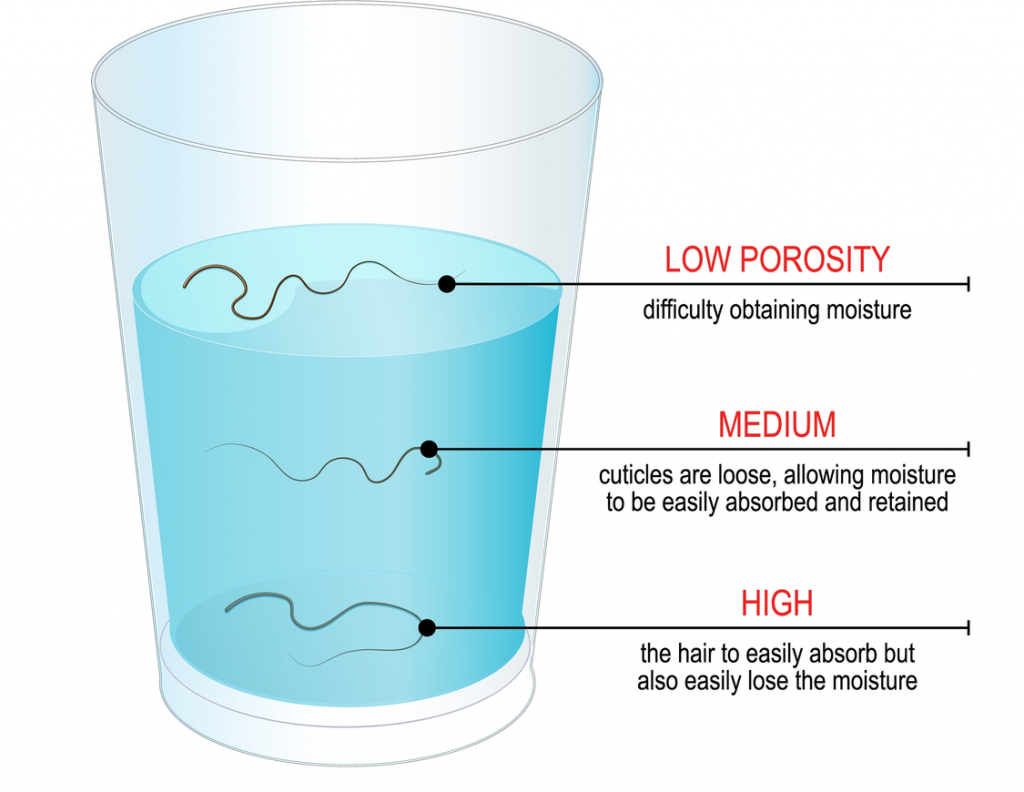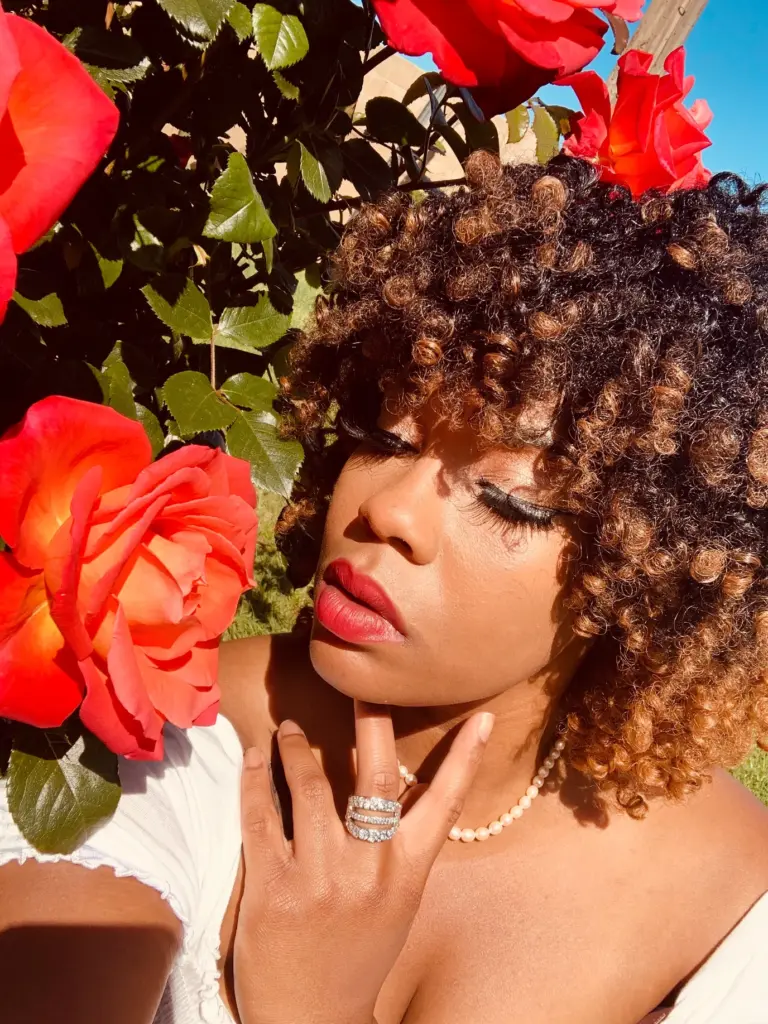Does your hair seem to alway be dry even when you try to moisturize it?
Does it seem like your hair just simply won’t retain moisture?
If you’ve answered yes to either of these questions, then you need to read this article.
To make your hair more moisturized and healthy, it is vital for you to learn about hair porosity.
In this article, I am going to share with you how and why you need to understand your hair porosity. I will also share with you what hair porosity is, and what you can do about it.
WHAT IS HAIR POROSITY AND ITS LEVELS
To start, it is important to establish a shared understanding of what hair porosity is.
Put simply, hair porosity is your hair’s ability to maintain moisture.
However, we all have a unique porosity that commonly falls within one of three levels: low, medium, and high hair porosity.
Low Porosity Hair
If you find that the products you apply to your hair aren’t easily absorbed and usually just sit on your hair, you may have low porosity hair.
If your hair appears to be moisturized but feels dry, that’s an indication that your hair may have a low porosity level and that your hair’s cuticles are tightly shut which makes it difficult for moisture to be easily absorbed.
Low porosity hair is harder to process because it repels water and resists the penetration of chemicals.
Medium Porosity Hair
If your hair holds moisture and absorbs chemicals and hair color better, then you probably have medium porosity hair.
This means that your cuticles are raised just enough to absorb an adequate amount of moisture, oils and any other chemicals. Medium porosity hair usually requires the least bit of maintenance.
Occasional protein treatments and deep conditioning are helpful but you don’t need to use protein in your daily hair regimen.
High Porosity Hair
High porosity hair can be caused by chemical processing, rough treatment or environmental damage.
In addition, high porosity hair has gaps in the cuticle, which allow too much moisture into your hair and make it more likely to become frizzy and tangled in warm climates.
Even simple acts such as bathing, swimming and shampooing can create more damage and breakage due to the sheer amount of moisture highly porous hair can absorb.
So far, are is this helpful?
HOW TO FIND OUT YOUR LEVEL
The questions above will give you a good preliminary place to start to figure out your hair’s porosity.
However, to more specifically figure it out, I suggest two tests. There are two simple ways to help you figure out your hair’s porosity level.
It is important to note that these tests are not 100% accurate but are a good way to start:
- The Strand Test: To do this, run your thumb and index finger along a strand of hair. If it feels smooth against your fingers, your hair may likely have a low porosity level. Also, if it feels rough and bumpy, then your hair may be highly porous.
- The Cup Test: To do this, fill up a cup of room temperature water. Preferably have a glass cup where you can see through the cup. Take a few shed hair strands that are already on your brush or comb. Drop a few hair strands into the cup and wait for about 2-4 minutes. If your hair sinks immediately you have high porosity hair. If your hair doesn’t sink at all you have low porosity hair.

HERE’S WHAT YOU CAN DO
Low Porosity Hair Tips:
If you have low porosity, there are a few things you can do about it. Use a steamer or your own body heat by using a plastic cap when your conditioning or using moisturizers will help open up the closed cuticle layer. This will allow moisture to seep into the strand.
Medium Porosity Hair Tips:
If your hair falls into this category, then there’s something you can do about it.
Occasional deep conditioning treatments with protein conditioners can benefit medium porosity hair, but proteins should not be included in your daily regimen.
High Porosity Hair Tips:
For this category of hair, using leave-in conditioners is going to be helpful since they tend to lose moisture.
Layering your hair with moisturizers (butter, lotions, etc.) and sealers (oils) can help lock in the moisture that you add-in.
Try using the Quench Collection for an entire hair care system to support healthy porosity to moisturizes and nourishes hair to support healthier hair growth.
You will also want to use anti-humectants if you live in a climate with high heat and humidity levels.
This will help seal your damaged cuticles and prevent them from absorbing excess moisture in the air.
Latest posts by Brandelyn Green (see all)
- Everything You Need to Know About Moisturizing Oils Vs. Sealing Oils - February 15, 2024
- 4 Simple Tips To Slay Your Edges that You’ll Love - February 15, 2024
- 5 Benefits of Peppermint Oil That Will Make Your Hair Feel Like New - February 12, 2024









Facebook Comments